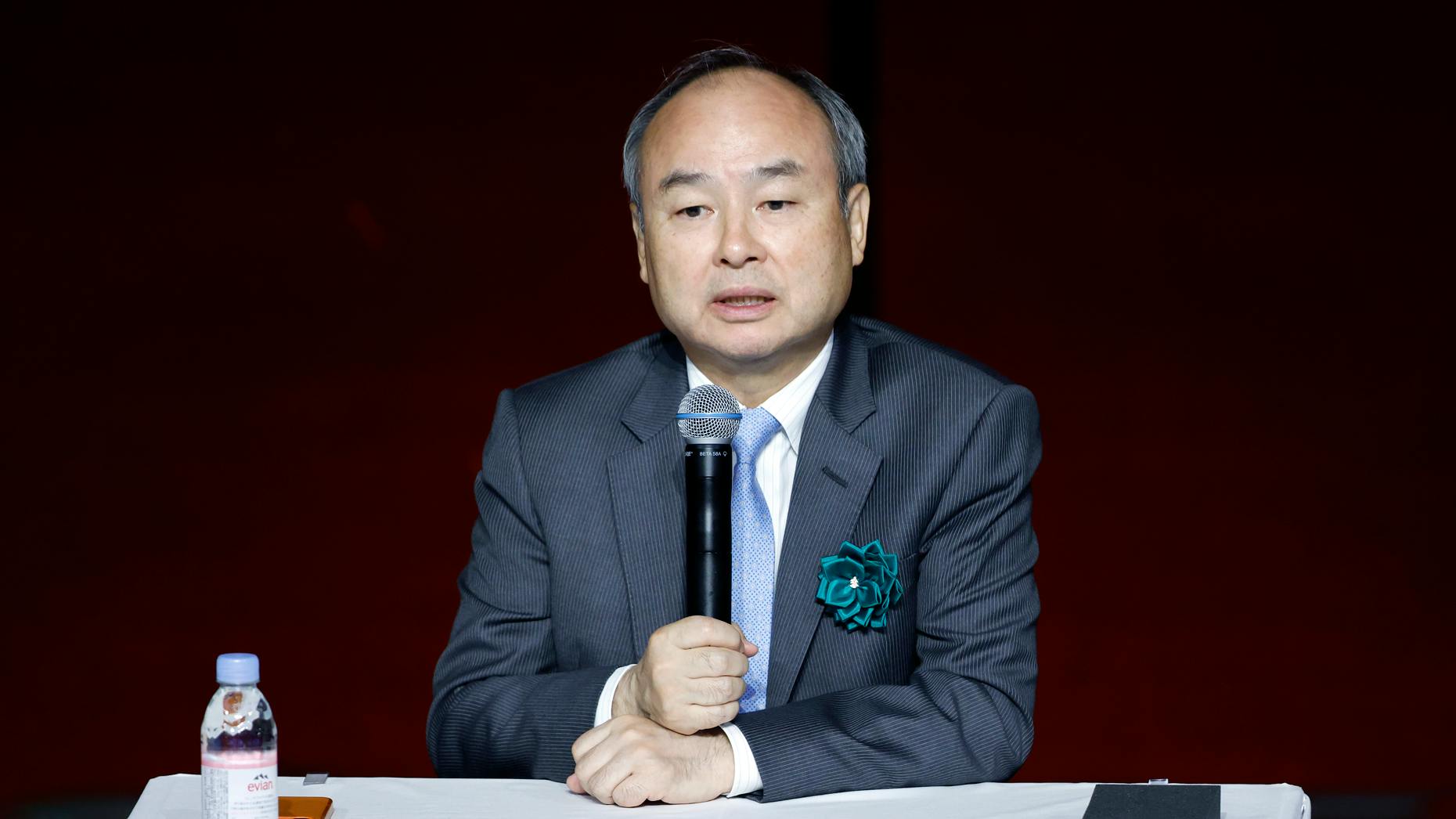Arm’s IPO Pitch to Wall Street: Don’t Worry, Growth Is Coming
 SoftBank CEO Masayoshi Son. Photo by Getty.
SoftBank CEO Masayoshi Son. Photo by Getty.Behind the scenes of its much-anticipated initial public offering, SoftBank-owned chip designer Arm has pushed a clear message to skeptical analysts and investors: Growth is coming soon.
The company told investment banking analysts last month in Cambridge, England, that its recently flat revenue growth would re-accelerate over the next few years after it hiked royalty fees by about 40% on smartphone companies using a new version of its chip technology, two people with direct knowledge of the meeting said. The company is also counting on a recovery in the smartphone sales market from manufacturers that purchase Arm’s chip technology.
The Takeaway
Powered by Deep Research
As a result, sell-side analysts from at least two investment banks—Goldman Sachs and Jefferies—have told potential investors they expect Arm’s sales to surpass $4 billion by fiscal year 2026, up more than 56% from the firm’s fiscal 2023, which ended in March, according to people briefed on the forecasts, which are private until after the IPO. The analysts based their financial forecasts on guidance from Arm executives, the people said.
The forecasts, which haven’t been previously reported, could help support Arm’s lofty valuation target. Arm executives are meeting with potential investors this week in New York, Boston, Baltimore, the Washington, D.C. area, and virtually as part of an IPO roadshow ahead of a public listing on Nasdaq late next week. The company said in a securities filing Tuesday it was looking to sell stock at $47 to $51 a share, implying a valuation of up to $52 billion.
To be sure, SoftBank has a history of overpromising on growth at some of its most notable investments, and the valuation range Arm put on the IPO has struck some investors and analysts as too high. The high end of the valuation range would be about 30% higher than the price at which Nvidia agreed to buy Arm in 2020, before sale talks fell through due to regulatory scrutiny. While the company drew commitments from a litany of customers including Apple and Nvidia to buy stock in the IPO, Arm didn’t disclose any commitments from institutional investors that might be more sensitive to high valuations.
Arm also has drawn questions from potential investors about several threats to its business, including open-source competitors and a significant percentage of revenues coming from its own China division.
Research firm AB Bernstein, which wasn’t briefed by Arm at the analyst day last month, pegged Arm’s enterprise value at about $46 billion—or about a $48 billion market capitalization—and anticipated slightly slower growth than some investment banks.
Sara Russo, a senior analyst at AB Bernstein, told The Information that Arm could drive faster-than-expected revenue growth by securing higher royalty rates from customers that use the new version of its chip architecture, which promises better security and compute performance. “Arm seems to have a lot of confidence,” she said.
Arm, in its fourth decade of existence, is returning to the public markets after being fully controlled by SoftBank for seven years. SoftBank plans to sell only about 10% of its stake to the public, in what would be the largest IPO since Rivian went public in 2021. Arm is much smaller than major semiconductor firms like Nvidia, AMD, Qualcomm and Marvell. It takes just a couple of percentage points in royalty fees off of products sold that use its technology, in addition to licensing fees.
While SoftBank CEO Masayoshi Son talked up Arm’s capabilities to power an emerging “internet of things” market when he took it over in 2016, the reality has been less glamorous. The company still expects its revenue growth to largely come from its existing market of smartphone customers, rather than emerging areas like data centers, the internet of things or autonomous vehicles, the people said.
But it has been able to charge higher royalty rates as it improved its technology, up from about 2.3% to 3.2%, executives told analysts. Arm has already locked in more than 80% of its royalty revenues for fiscal year 2026 under contract, a person with direct knowledge of the matter said. That revenue growth would help fuel profits. Earnings before interest, taxes, depreciation and amortization would roughly double to more than $2 billion by fiscal year 2026, according to Goldman’s forecast, a person briefed on it said.
The growth in royalty revenues would help Arm return to a revenue growth rate similar to what it saw in fiscal year 2022, when sales grew overall by 33% from the prior year. A sluggish market for smartphone sales caused revenue to dip slightly last year.
An Arm spokesperson declined to comment.
Cory Weinberg is deputy bureau chief responsible for finance coverage at The Information. He covers the business of AI, defense and space, and is based in Los Angeles. He has an MBA from Columbia Business School. He can be found on X @coryweinberg. You can reach him on Signal at +1 (561) 818 3915.